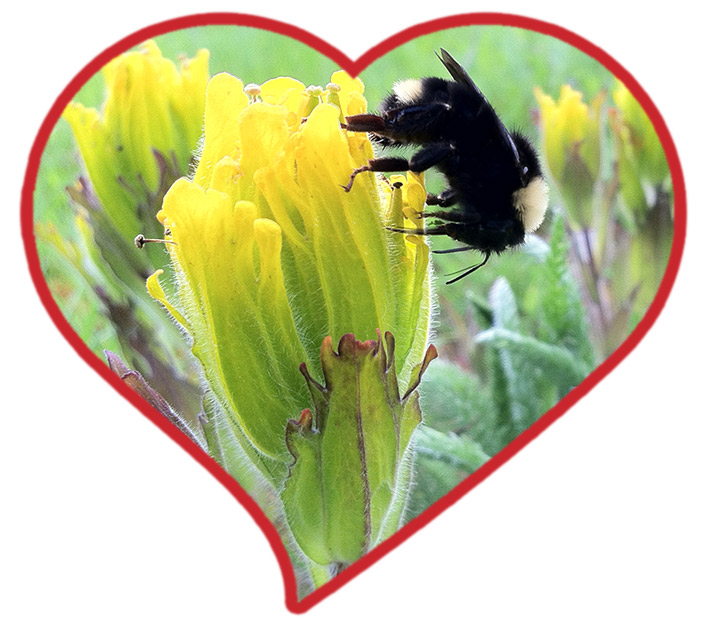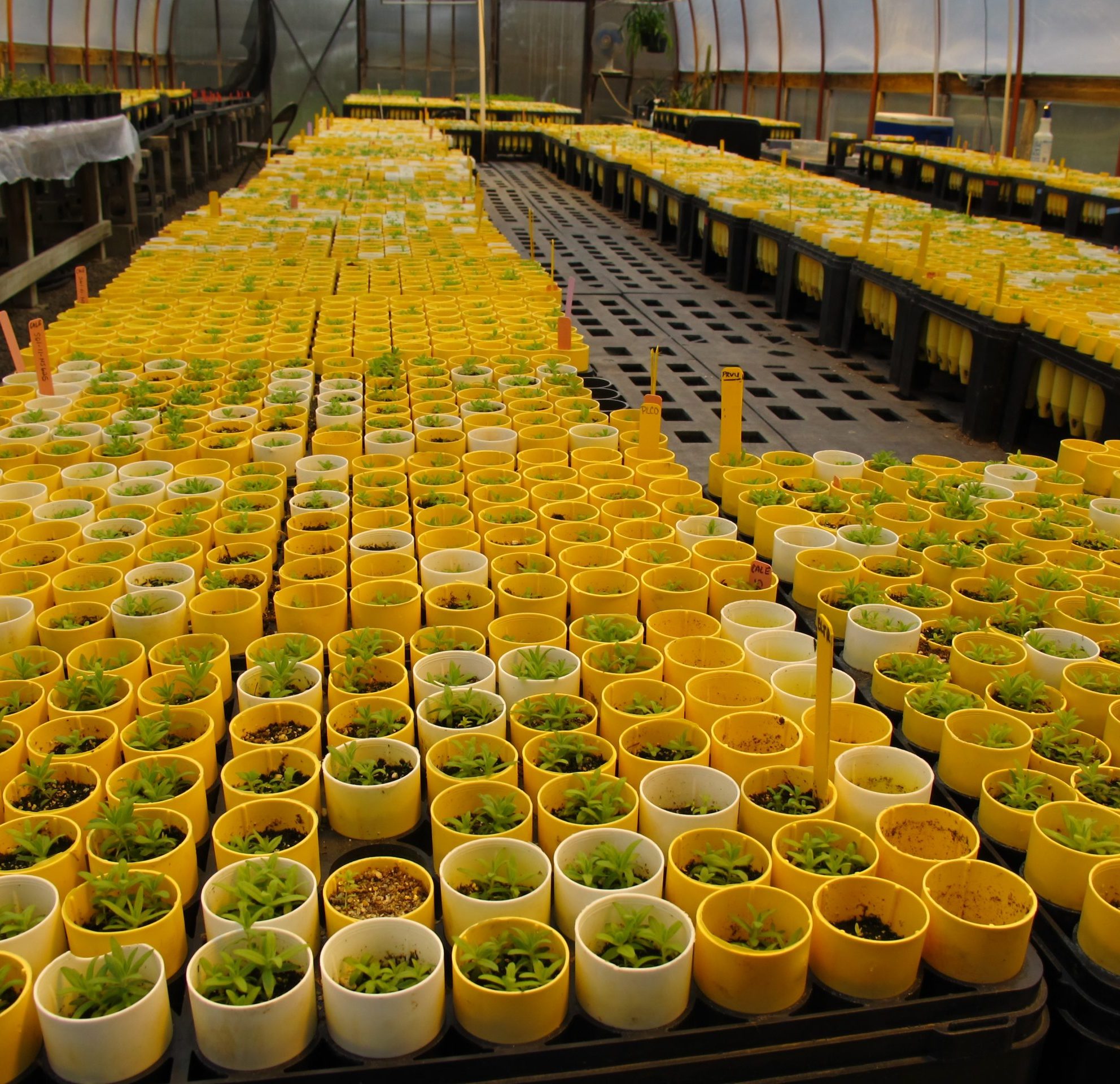Lots of Love for a Returning Oregon Native
Institute for Applied Ecology
Based on an interview with Tom Kaye, Ph.D., Executive Director
Plant Dating Profile: Golden Paintbrush
Name: Castilleja levisecta
Location: British Columbia, Washington, and Oregon
About me: I can be independent when I’m in a comfortable nursery, and I even make my own chlorophyll, but I have to admit that I am a hemiparasite and prefer a host to help support me. I love it when bumblebees come to my flowers! Though my flowers may not grab your attention, they’re tucked into bright yellow bracts that definitely will.
I’ve been listed as a threatened species in the U.S. since 1997 and have been getting some good help to get me back on my feet.
Looking for: Honestly, I’m pretty attracted to all kinds of plants and like to live in areas with a diversity of ‘significant others’ that I can tap into. I do pretty well with a variety of host plants, from grasses like Idaho fescue to perennials like woolly sunflower and yarrow. But flirty annuals need not apply, I’m looking for something long-term (though not necessarily exclusive).
Likes: I like prairie habitats – grasslands… but, I don’t like the grass and other vegetation around me to get too tall. I guess that’s why I flourish with regular flushes of wildfire.
Dislikes: Invasives encroaching on my spot, hikers and animals trampling me, people picking my flowers. And of course I loathe habitat destruction.

The last natural populations of golden paintbrush in Oregon were last recorded in 1938. But through the efforts of one CPC’s newest participating institution, the Institute for Applied Ecology (IAE) and its partners, there are now 23 reintroduced populations totaling some 360,000 individuals in the prairie grasslands of Oregon’s Willamette Valley. It took a lot of research and adaptive management to get to this point, including increasing the understanding of what this beautiful parasitic plant looks for in a host.
The efforts started in the nursery, where researchers paired golden paintbrush with over 12 potential host species. Proving itself not particularly picky, the propagated paintbrushes never failed to establish a connection with their host’s roots, regardless of species. Being a hemiparasite, it was also able to grow and reproduce in the nursery without a host. Yet, it undeniably thrives and produces more flowers when paired with a suitable host – and does not occur in the wild without one.
Having learned to propagate golden paintbrush, Dr. Tom Kaye, Executive Director of IAE, then worked with US Fish and Wildlife staff to figure out an approach for how to reintroduce the species back to Oregon. Finding suitable reintroduction sites, they then collected seed from populations in Washington. Through experimentation they found that plants from seed originating in sites that may have been further away in Washington but more similar ecologically, especially in term of the vegetation community, did best. They also learned more about golden paintbrush-host plant relationships.
For one, says Tom Kaye, it was clear that golden paintbrush is looking for a stable relationship: annual plants do not make good hosts. However, this doesn’t mean that they’re looking for an exclusive relationship. A golden paintbrush can attach to multiple host plants, and survival of reintroduced plants increases as the number, and diversity, of neighbors increases. Diversity of hosts seems to matter more than the identity of the host. For example, though woolly sunflower (Eriophyllum lanatum) is a good, and common host, a golden paintbrush attached only to this perennial herb could find its connection impacted in years when the local vole population surges, as the little rodents seem attracted to the sunflower’s roots. Attaching to several perennials allows golden paintbrush to buffer itself from potential problems.
All photos by Tom Kaye, courtesy of Institute for Applied Ecology.




As a result, sometimes IAE restores prairies along with their golden paintbrush reintroductions. When seeding an area with paintbrush seed, they will also seed various prairie bunchgrasses and perennial herbs. Establishing both at the same time allows golden paintbrush to establish with the community. When plant diversity is already high, planting plugs works as an alternative to seeding – though additional hosts may need to be planted as well.
The original reintroduction efforts occurred in 2004, but efforts ramped up in 2010 and success has come relatively quickly. It helps that there are also reintroduction efforts being conducted in Washington. There Dr. Peter Dunwiddie at University of Washington and with the Center for Natural Lands Management has come across similar challenges and results as IAE and the two programs have been able to learn from each other. As a result of the efforts in both Washington and Oregon, golden paintbrush’s chances of recovery are looking up. Though Tom expects some drop off in the populations after the initial boom following reintroduction, he is hopeful that this special paintbrush is back in Oregon for good.